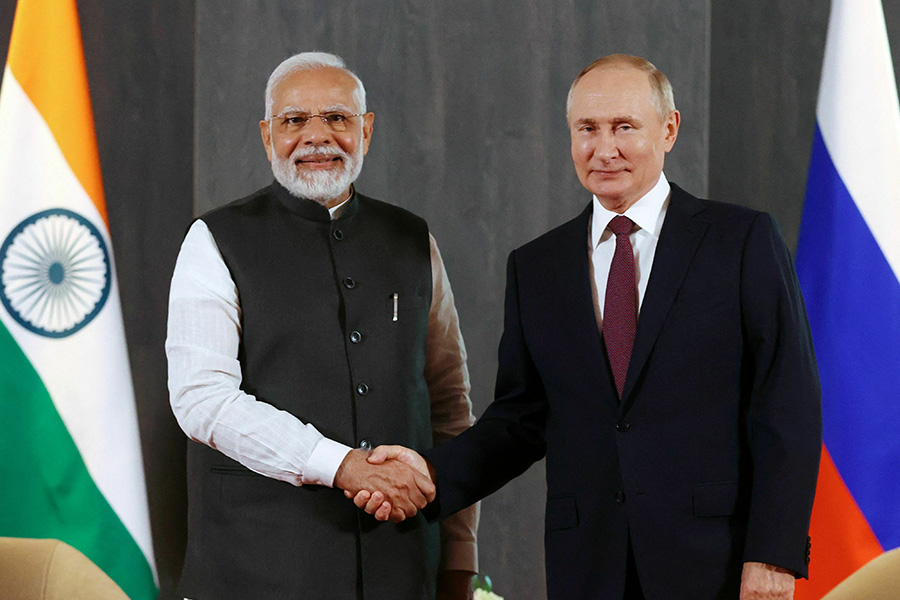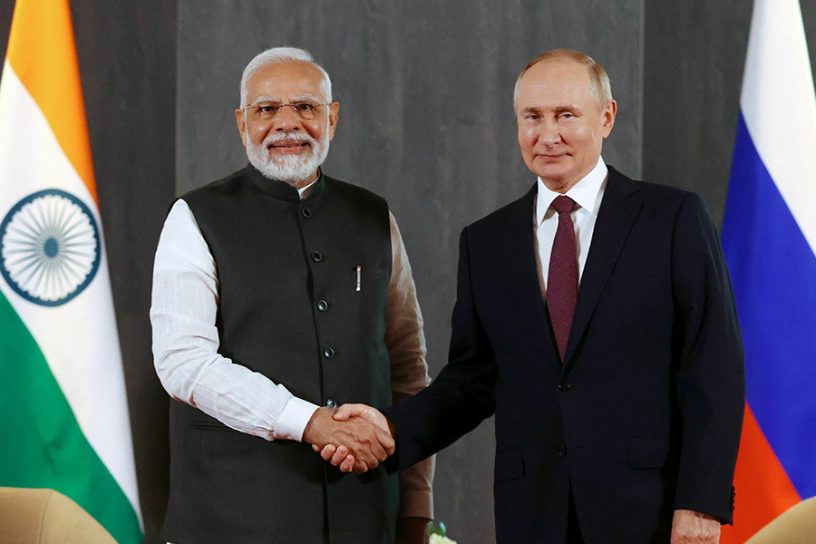
While Putin wishes to bring China and India together as part of a united front to counterbalance the West, Beijing and New Delhi have their distinct policies that don’t align with Moscow’s worldview.
Author
Sreeram Chaulia, Professor and Dean, Jindal School of International Affairs (JSIA), O.P. Jindal Global University, Sonipat, Haryana.
Summary
A new foreign policy concept released by Russia on March 31 is in many ways a continuation of and doubling down on the old anti-western strategy and direction that have become the hallmarks of President Vladimir Putin’s thinking.
The document slams the Western policy of “confrontation and hegemonic ambitions” and hails the advent of a multipolar world order, which is presented as an inevitability that the West cannot stop with “neo-colonialism” and the “logic of global dominance”. It also recommits to “comprehensive deepening of ties and strengthening coordination with friendly sovereign global centers of power,” namely China and India and presents the two Asian countries as keys to Russia’s quest to overturn the unfair western-made international system.
Although the new Russian document is a crystal-clear elucidation of Putin’s core beliefs and preferences, it faces serious headwinds due to the widening fissures in world politics. The Russian war in Ukraine has led to Moscow burning all bridges with Washington and Brussels. In earlier times, Russia had a grand strategic goal of separating Europe from the United States (US), thereby weakening the threat posed by the North Atlantic Treaty Organization (NATO). Now that the US and Europe have coalesced around defending Ukraine, Russia is compelled to look at China and India as its main fallbacks to push back against the West.
The problem is that Putin wishes to bring China and India together as part of a united front to counterbalance the West, but Beijing and New Delhi have their distinct policies that don’t coincide with Moscow’s worldview.
Published in: Hindustan Times
To read the full article, please click here.


